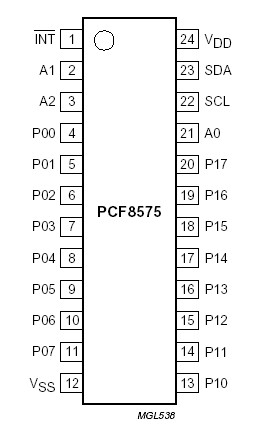PCF8575: Features: · Operating supply voltage 2.5 to 5.5 V· Low standby current consumption of 10 mA maximum· I2C-bus to parallel port expander· 400 kbits/s FAST I2C-bus· Open-drain interrupt output· 16-bit ...
floor Price/Ceiling Price
- Part Number:
- PCF8575
- Supply Ability:
- 5000
Price Break
- Qty
- 1~5000
- Unit Price
- Negotiable
- Processing time
- 15 Days
SeekIC Buyer Protection PLUS - newly updated for 2013!
- Escrow Protection.
- Guaranteed refunds.
- Secure payments.
- Learn more >>
Month Sales
268 Transactions
Payment Methods
All payment methods are secure and covered by SeekIC Buyer Protection PLUS.

 PCF8575 Data Sheet
PCF8575 Data Sheet







